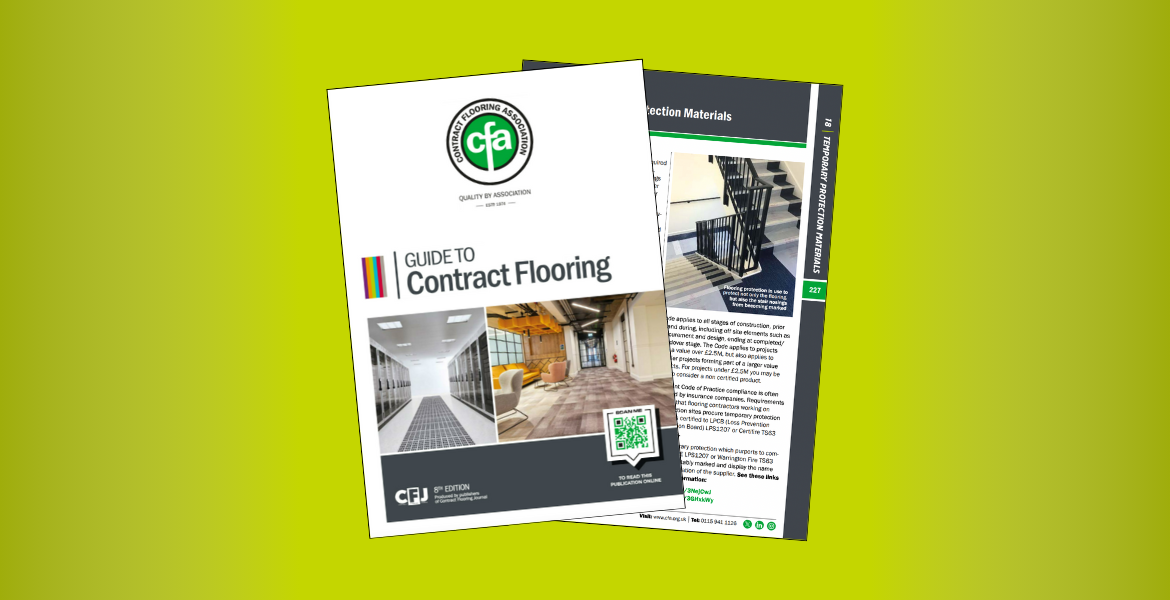
There are many forms of temporary protection for contract flooring. It is important to select a protection product fit for purpose and suitable for the project in hand. The following points should be considered in the selection process:
For smooth floors (vinyl, resilient floors, screeds, marble, timber, laminates, etc.) a product providing impact protection is needed. Products to consider include impact board/twin wall/twin fluted polypropylene board/hardboard/plywood. Advice on selection of the appropriate material is available from suppliers.
For heavier traffic sites or sites requiring protection for a longer term heavier grade protection should be considered. Impact board or heavier duty fluted polypropylene board may be considered. Hardboard or plywood also offer impact protection and may be considered. Please consult your protection supplier.
For soft floors (carpets, etc.) impact protection is not an issue. For cut pile carpets an adhesive backed polythene can be used. This product is simply rolled out and bonds directly to the carpet. The adhesive backing will hold the product in place during the programme of works. The material should be of a type that peels clean after use, leaving no residue.
For loop and cut pile carpets, a loose fitting membrane can be used, either a polypropylene or polyethylene sheeting. This can then be fixed in place using either tapes (see the CFA Guide to Contract Flooring’s information regarding fixing tapes) or, for a loop pile carpet, using a male Velcro dry fix method.
There may be some risks if moisture-sensitive floor coverings are protected for prolonged periods with impervious protection material as there is a chance that the floor may “sweat” underneath. This is of particular relevance where there is underfloor heating (UFH) to be considered.
If impervious protection is to be used long term over a moisture sensitive floor covering, it is advisable to contact the manufacturers of the floor covering beforehand. Breathable protection products should be considered.
Fixing methods for protection must be considered. For smooth and finished floors a peel clean adhesive tape must be used. Standard tapes may leave a residue or shadow on the floor.
For cut pile carpets a higher tack carpet tape that does not leave any adhesive residue should be used. For loop or twist pile carpets a Velcro dry fix method should be used.
Temporary protection materials should be left in-situ until point of handover. Protection should not be lifted if trades are still working on site. Removal of protection too early may result in damage to finishes. Disposal of protection materials should be considered.
Manufacturers can support recycle, reuse or remanufacture of used materials. Removal of temporary protection materials may be the responsibility of the main contractor or the subcontractor. Whoever is responsible for its removal and disposal should look to recycle, reuse or remanufacture to avoid materials going to landfill or incineration.
For further information about temporary protection materials and other technical guidance, please consult the CFA Guide to Contract Flooring.